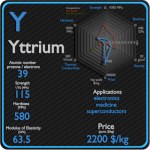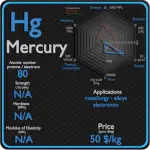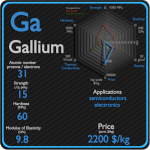This article contains comparison of key thermal and atomic properties of scandium and aluminium, two comparable chemical elements from the periodic table. It also contains basic descriptions and applications of both elements. Scandium vs Aluminium.

Scandium and Aluminium – About Elements
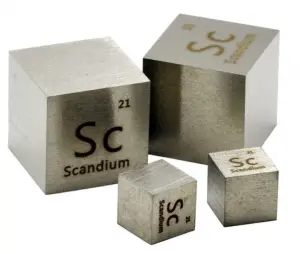
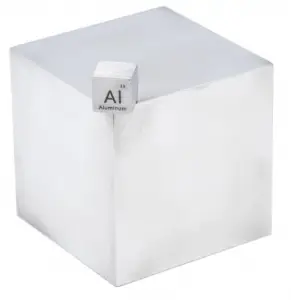
Source: www.luciteria.com
Scandium and Aluminium – Applications
Scandium
The main application of scandium by weight is in aluminium-scandium alloys for minor aerospace industry components. These alloys contain between 0.1% and 0.5% of scandium. Sc drastically improves Al alloys, increasing strength, corrosion resistance and weldability.
Aluminium
Aluminium and its alloys are used widely in aerospace, automotive, architectural, lithographic, packaging, electrical and electronic applications. It is the prime material of construction for the aircraft industry throughout most of its history. About 70% of commercial civil aircraft airframes are made from aluminium alloys, and without aluminium civil aviation would not be economically viable. Automotive industry now includes aluminium as engine castings, wheels, radiators and increasingly as body parts. 6111 aluminium and 2008 aluminium alloy are extensively used for external automotive body panels. Cylinder blocks and crankcases are often cast made of aluminium alloys.
Scandium and Aluminium – Comparison in Table
| Element | Scandium | Aluminium |
| Density | 2.985 g/cm3 | 2.7 g/cm3 |
| Ultimate Tensile Strength | 200 MPa | 90 MPa (pure), 600 MPa (alloys) |
| Yield Strength | N/A | 11 MPa (pure), 400 MPa (alloys) |
| Young’s Modulus of Elasticity | 74.4 GPa | 70 GPa |
| Mohs Scale | N/A | 2.8 |
| Brinell Hardness | 740 – 1200 MPa | 240 MPa |
| Vickers Hardness | N/A | 167 MPa |
| Melting Point | 1541 °C | 660 °C |
| Boiling Point | 2830 °C | 2467 °C |
| Thermal Conductivity | 15.8 W/mK | 237 W/mK |
| Thermal Expansion Coefficient | 10.2 µm/mK | 23.1 µm/mK |
| Specific Heat | 0.6 J/g K | 0.9 J/g K |
| Heat of Fusion | 14.1 kJ/mol | 10.79 kJ/mol |
| Heat of Vaporization | 314.2 kJ/mol | 293.4 kJ/mol |

